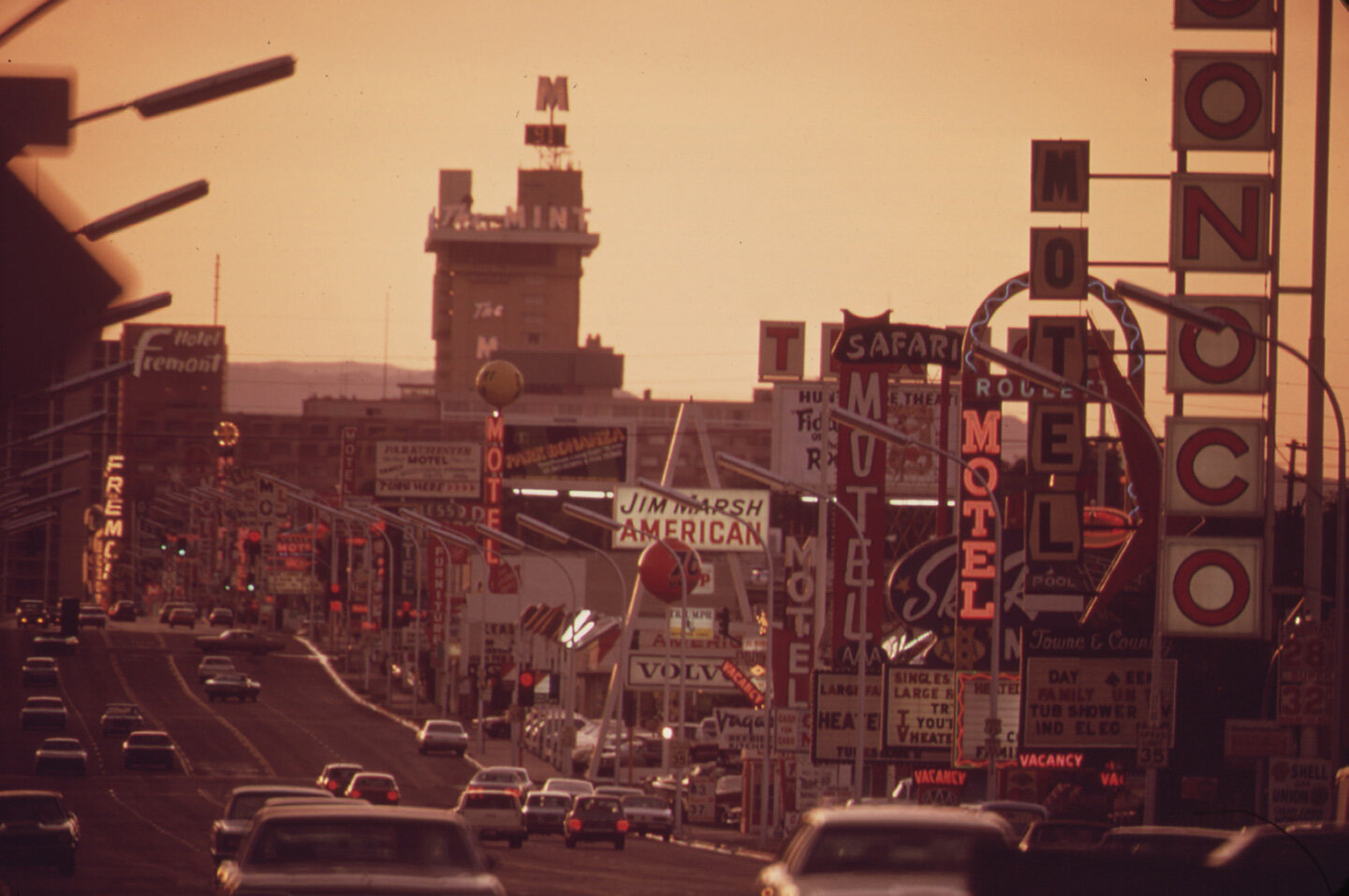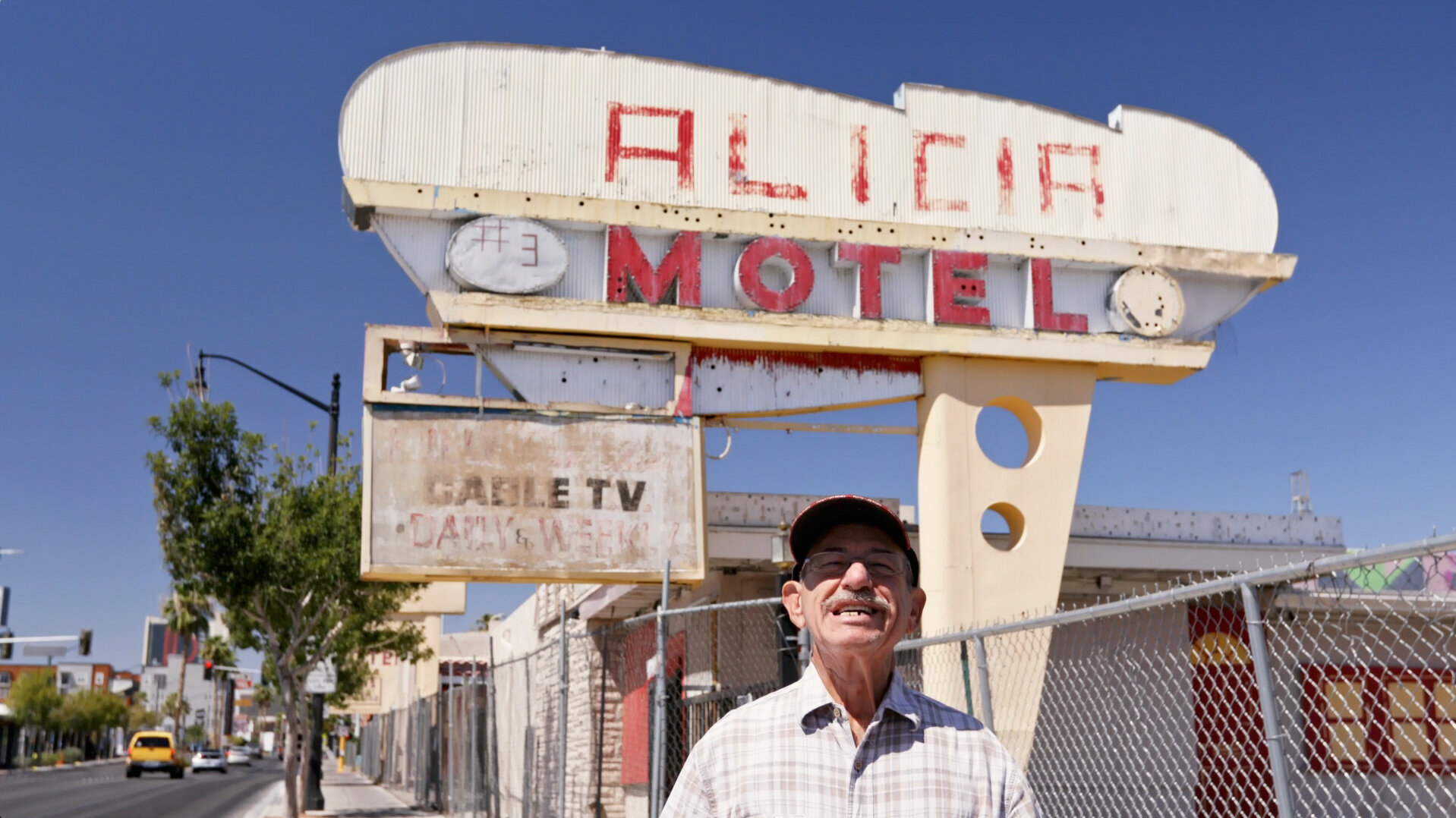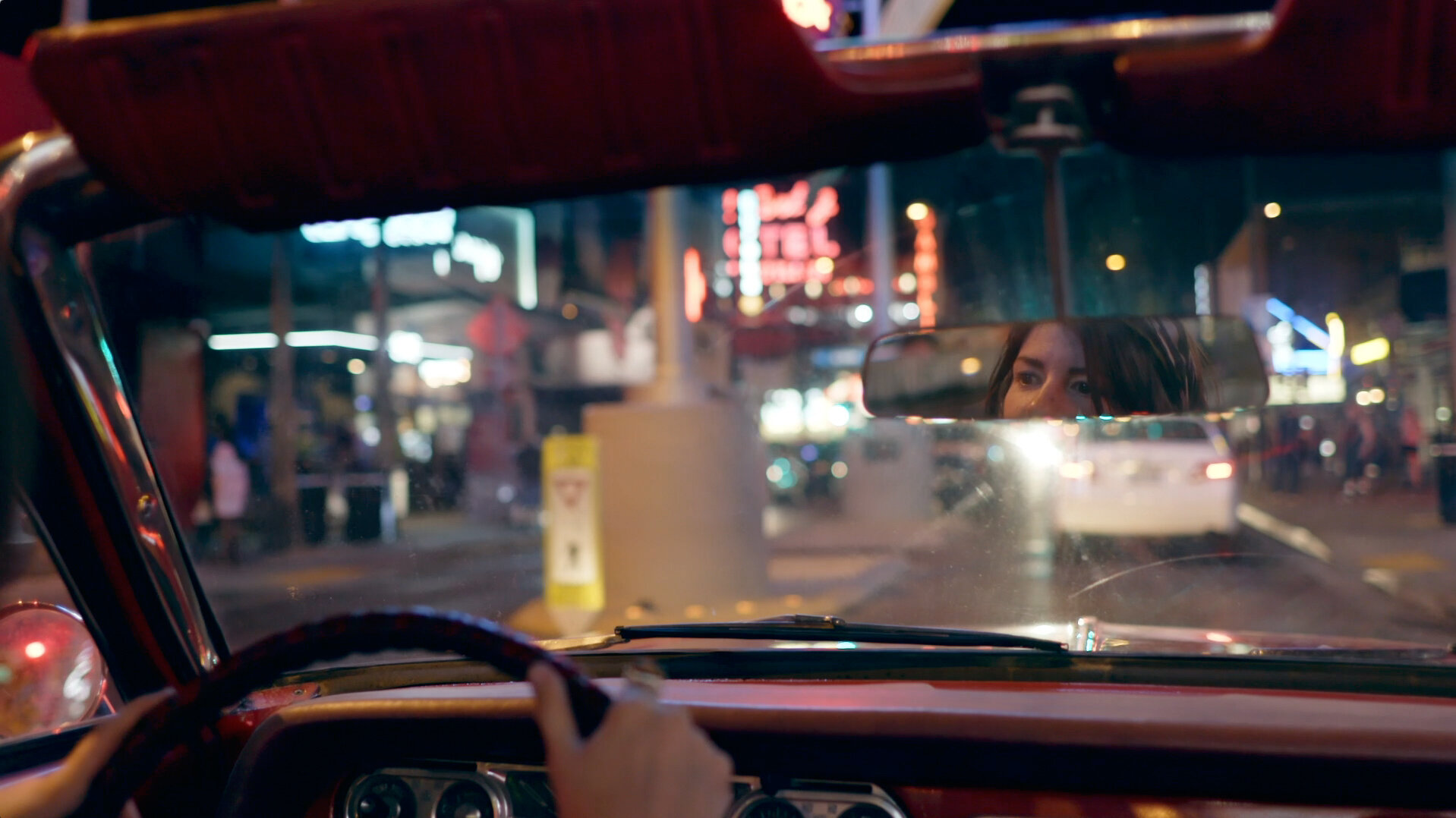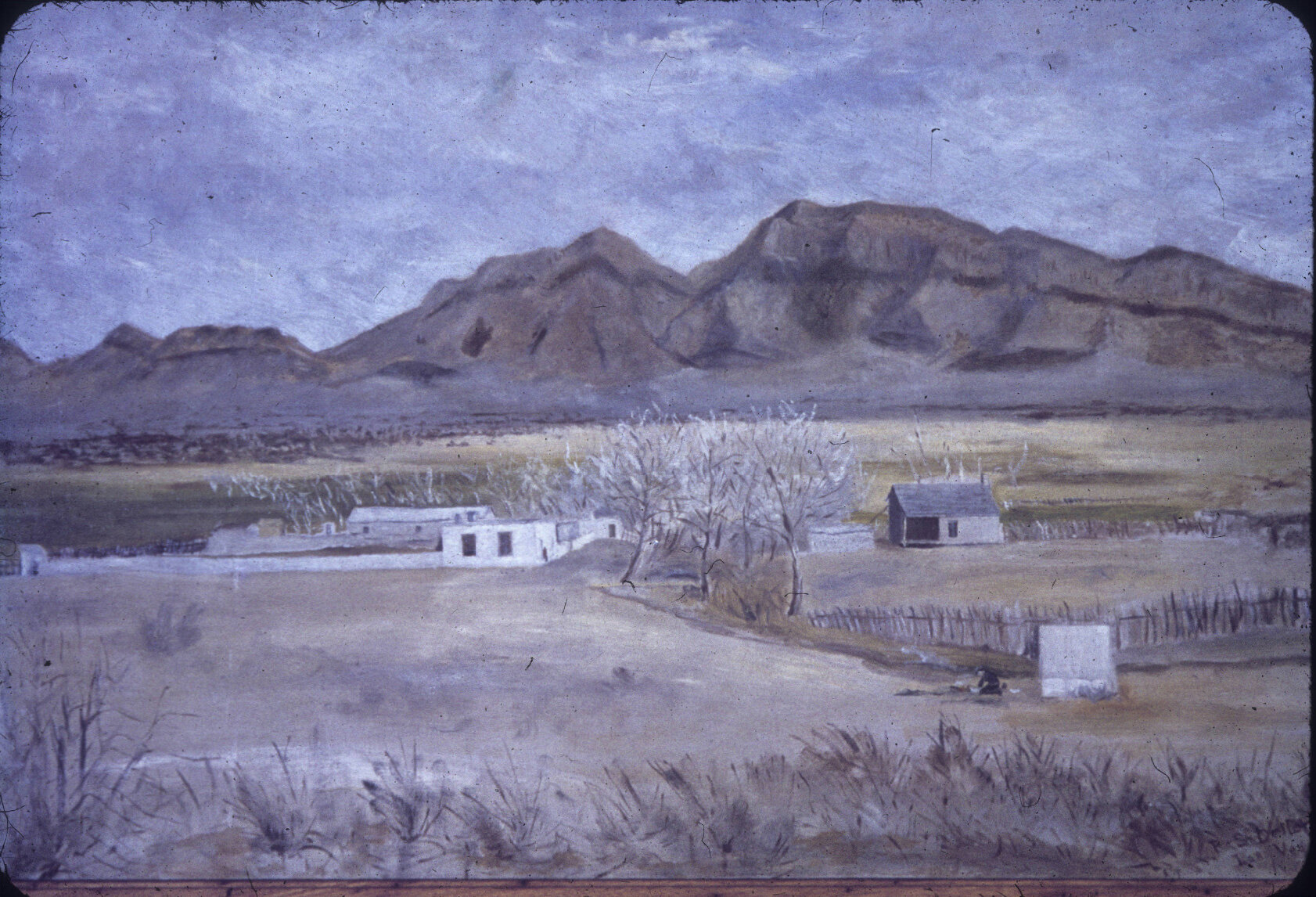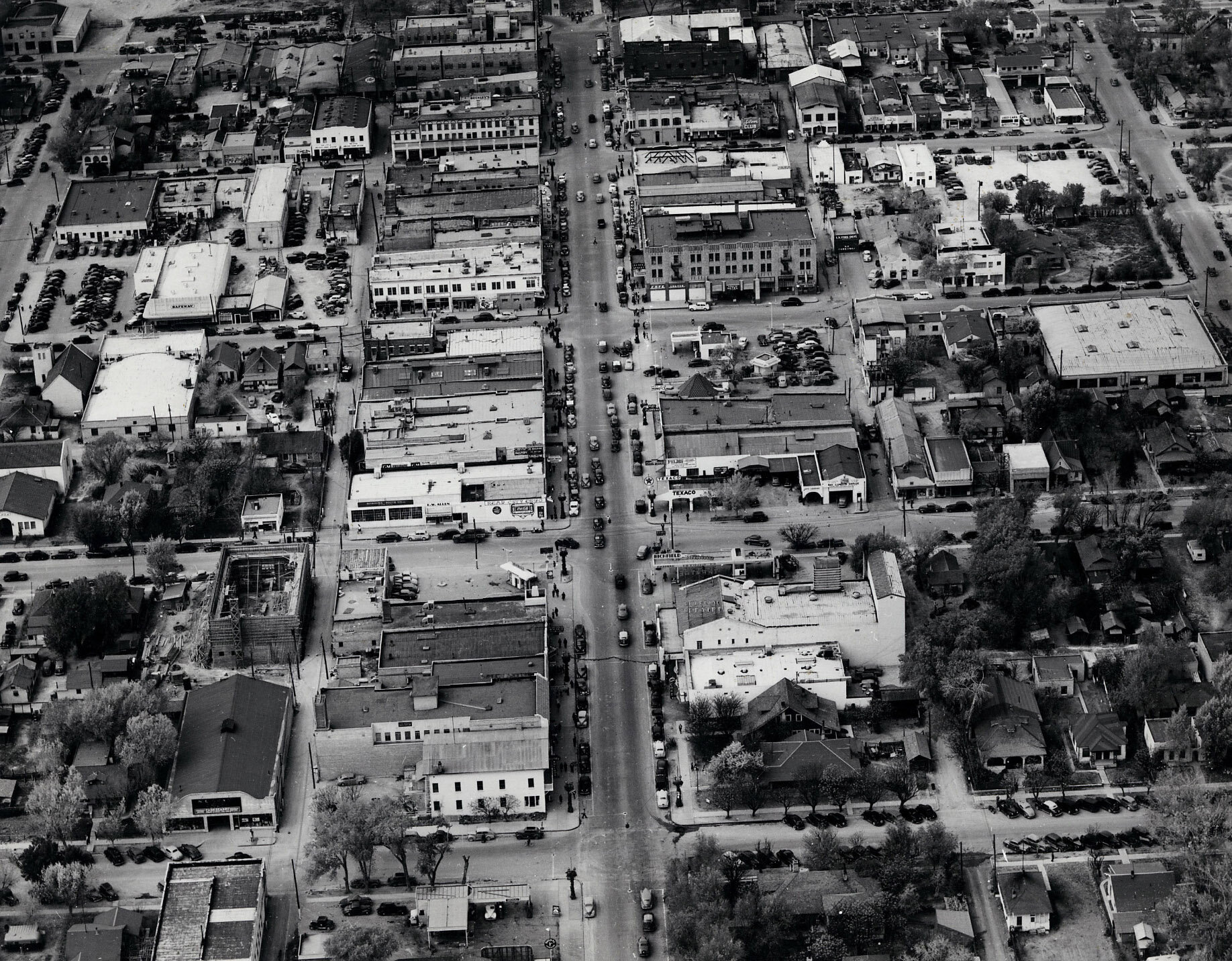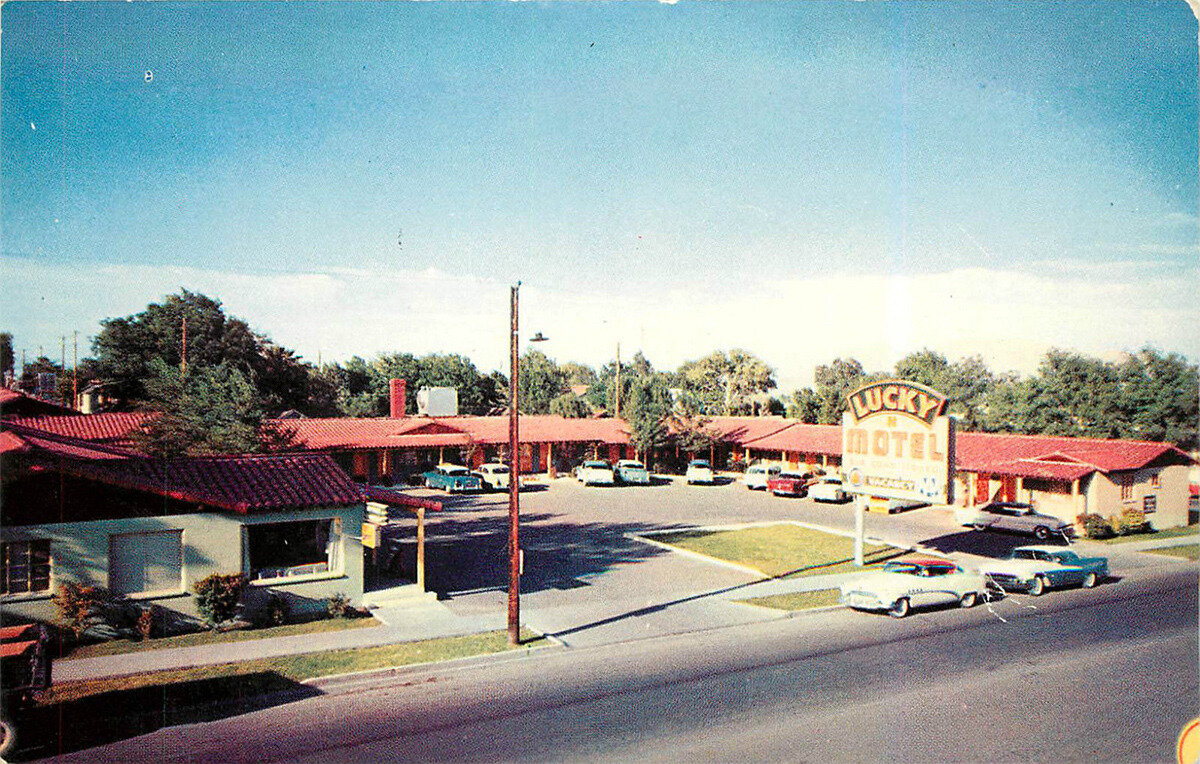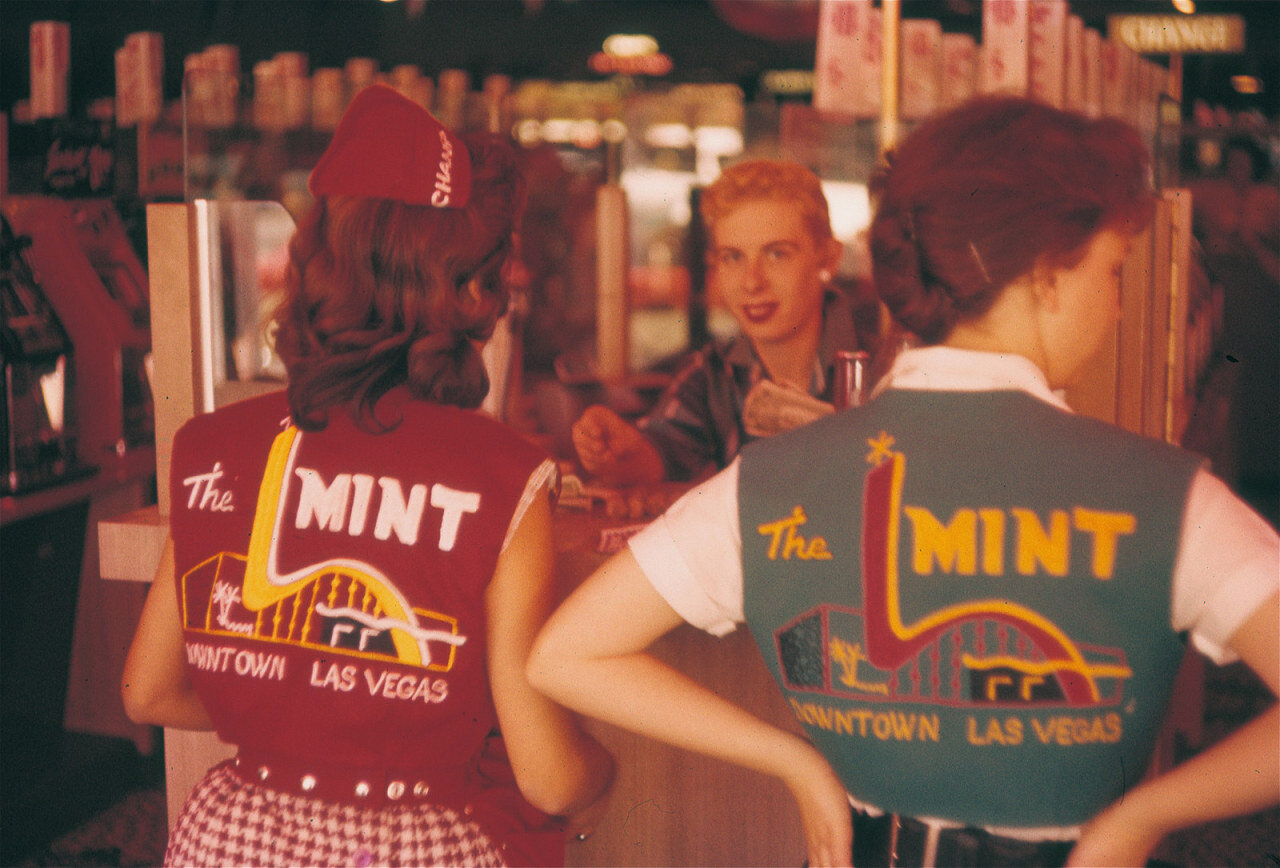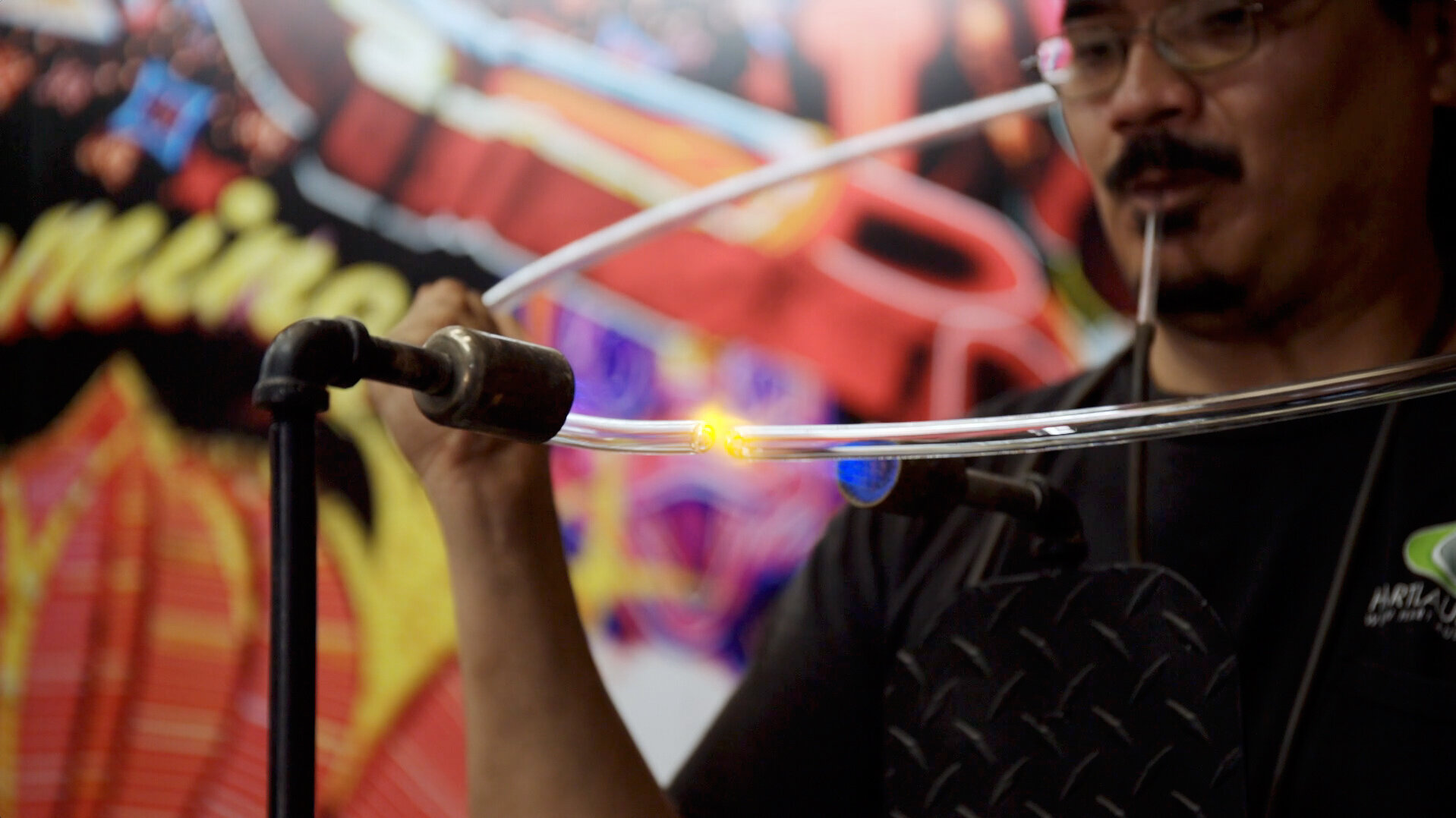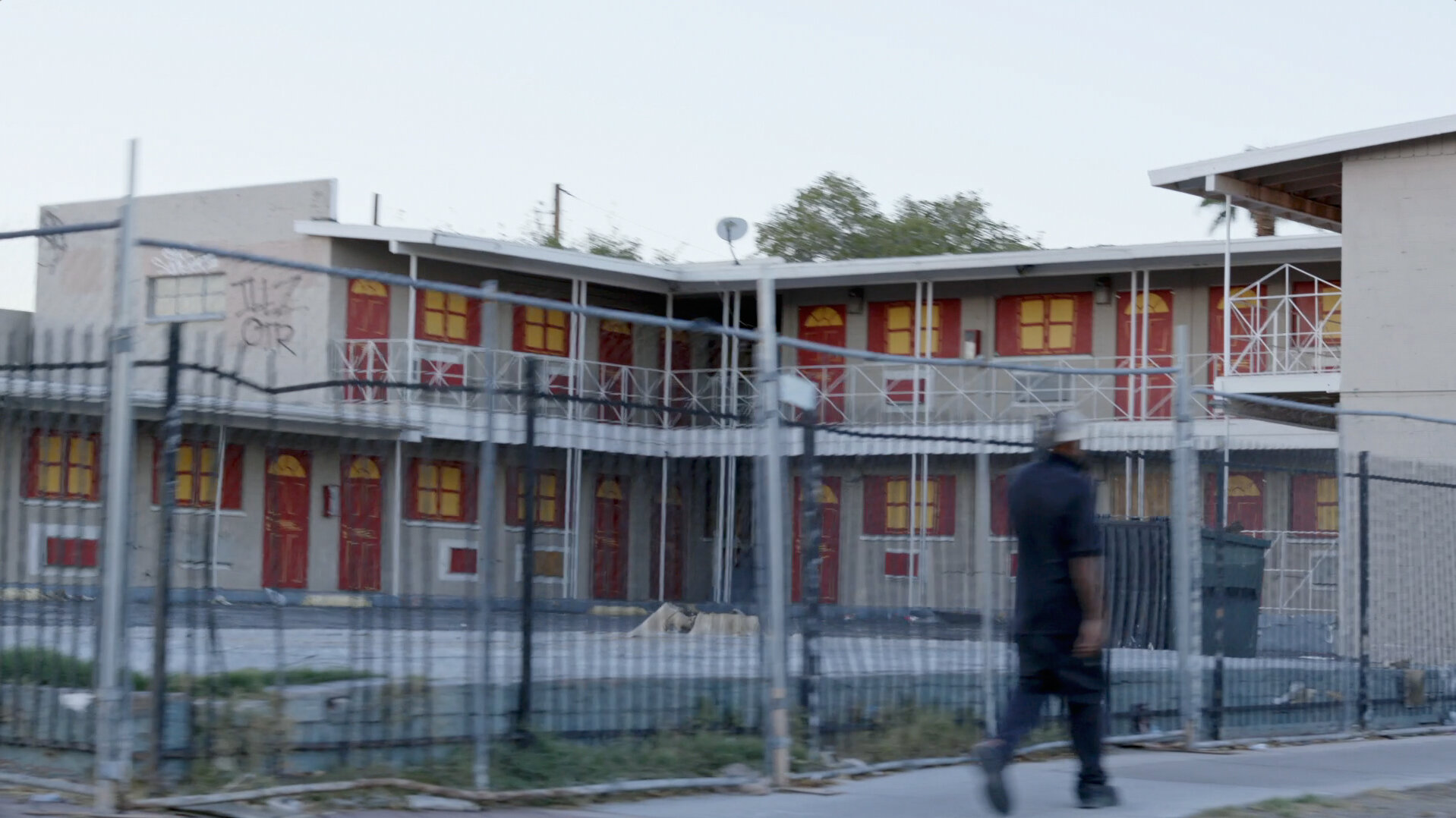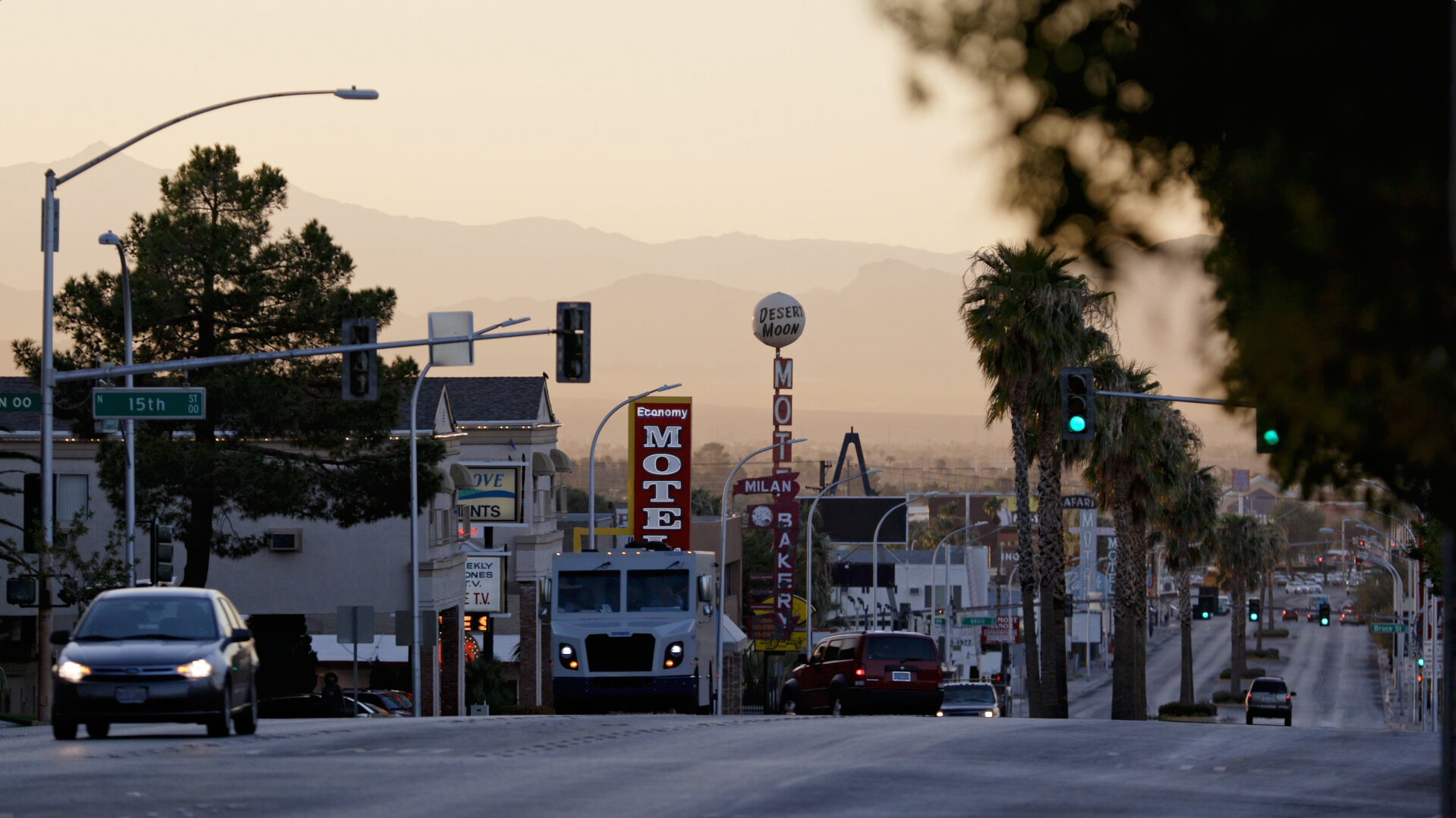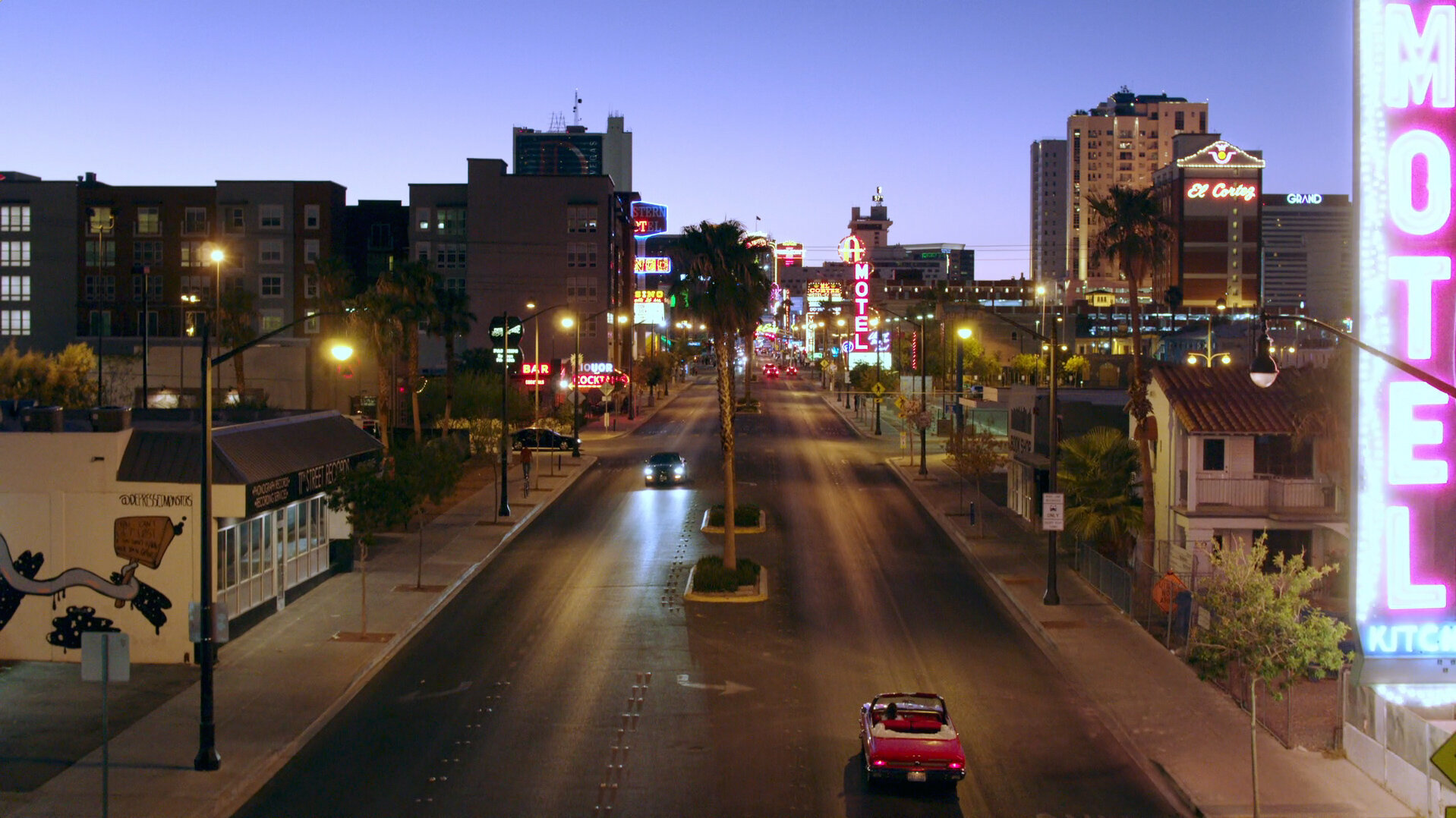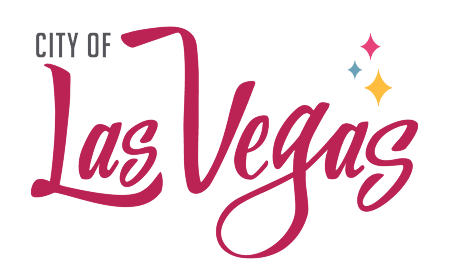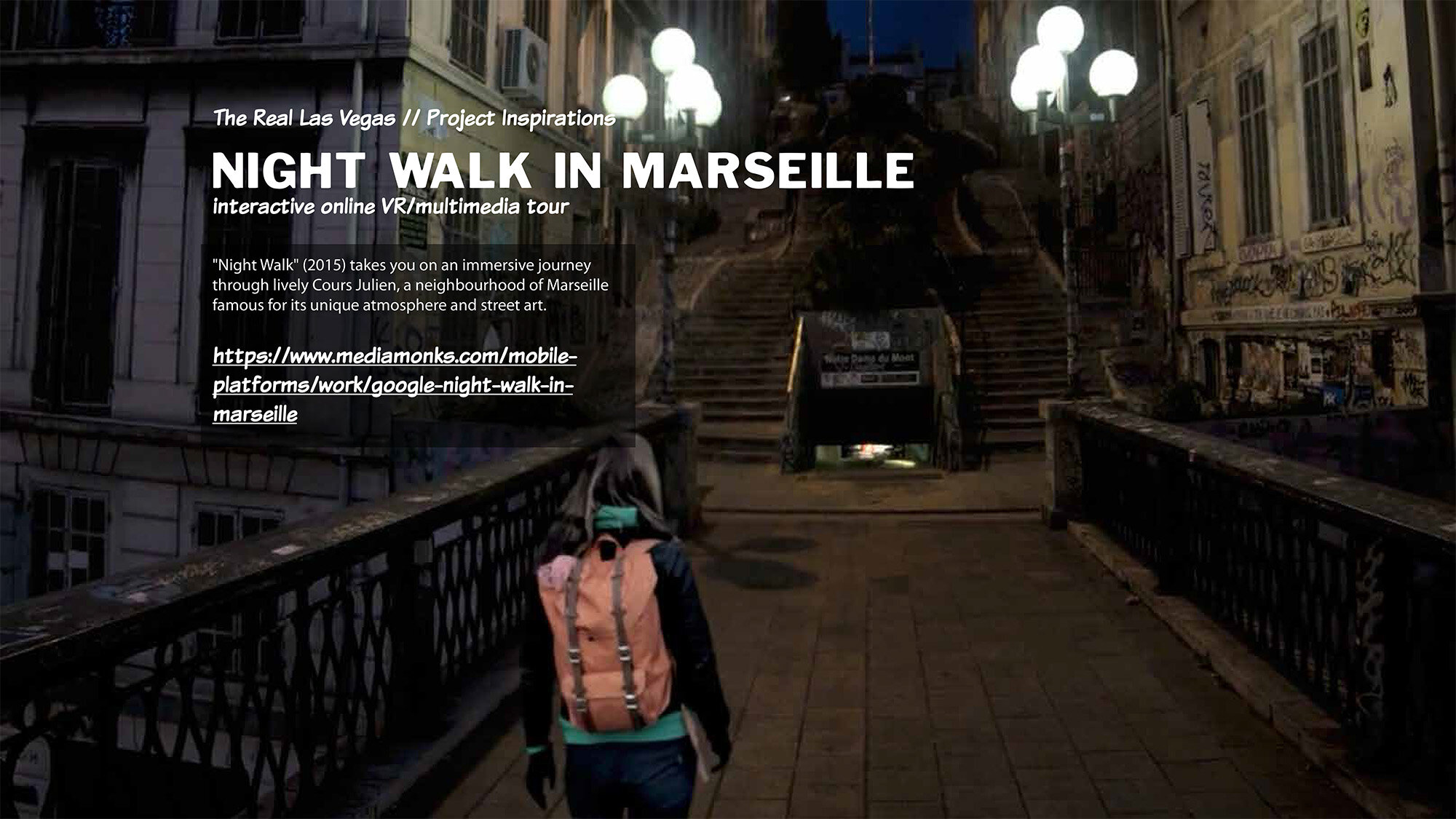How do you create places for local community in a city built for tourists?
After slicing open a coat of fading paint on the side of an abandoned motel on East Fremont Street, my colleagues show me layer after layer of eccentric colors: Robin’s Egg Blue, Sea-foam Green, Pontiac Red. The layers read like tree rings chronicling the rise and fall of Downtown Las Vegas, a story echoed in the skeletons of what were once brilliant neon signs that beckoned motorists to pull in and stay. We’re standing in the courtyard of just one of dozens of fading midcentury relics in the shadow of downtown’s Casino Center, and a far cry from the places that regularly appear in tourism campaigns or bachelor party stories. But unlike much of the rest of the valley, this area still maintains much of its historic character.
We wouldn’t be here, researching how to bring these motels back to life, if not for Las Vegans’ collective response to the horrific massacre at the Route 91 music festival on October 1, 2017. Invigorated by a newfound sense of civic identity, in 2018 the city launched Project Enchilada, a holistic effort to revitalize its downtown to reflect the local experience of the city—largely centered on the midcentury roadside character of East Fremont Street. As part of this effort, I was recruited to develop “21st Century” methods of media and engagement that could attract people to visit, move to, or invest in downtown.
After rounds of interviews with the who’s who of downtown, extensive research in the archives at UNLV, and several days of shooting footage on East Fremont, my team and I realized that we needed a radical way to go beyond the typical “Paradise Lost” story about downtown’s history based on the way that old white people remember it, and to stimulate a sense of local ownership in the project that would allow it to transcend a mere one-directional marketing campaign.
The Pitch: Co-Creation + Single Authorship
Sample pitch deck slides…
Inspired by the story of the Las Vegas Healing Garden and several participatory documentary projects around the world, we ultimately proposed the creation of a community storytelling platform and a series of short documentary films that will not only capture hidden local perspectives and experiences of downtown, but that also empower Las Vegans of diverse backgrounds to craft a collective story about who they are and who they want to be.
My work has been instrumental for the city to form key community alliances and bolster support around Project Enchilada, which has so far transformed ten blocks of East Fremont Street into a more pedestrian-friendly environment through restoration of seven midcentury modern motels and their neon signs, reinstallation of its forgotten 1920s street-lamps, planting a network of deciduous shade trees, and redevelopment of its streetscape to reflect moments of cosmopolitan aspiration throughout its history.
Role: “Real Las Vegas” Project Director
For: The City of Las Vegas
Date: 2018 -
Type: narrative strategy, urban design, community engagement, media campaign, research
Creative Producer: Annika Iltis
Creative Director, Interactive: Maya Santos
Project Enchilada Director: Brad Jerbic
Advisors, Research & Narrative: Susan Snyder, George Thomas, Alan Hess
Advisors, Impact & Outreach: Midge McCauley, Kelly Kost
Project Partners: Downtown Project, UNLV Special Collections
Doc Films Sizzle Reel (2:32)
“What am I here for, what am I supposed to do? Do you just have an idea and sit on it, do you just have a town you care about it and do nothing to make it better? Do you just go to work everyday for a paycheck? If that’s what life’s about, count me out.”

